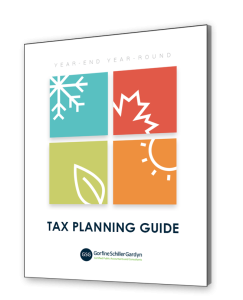The CARES Act has been signed into law, providing $2 trillion in economic relief for individuals and businesses in the United States.
Included in the CARES Act is a new Payroll Protection Program providing $350 billion of loans to aid small businesses and keep employees on the payroll.
The Small Business Administration’s 7(a) loans are fully guaranteed to cover payroll costs, interest on mortgage payments, rent obligations, and utilities. The loan program runs from the covered period from February 15, 2020 through June 30, 2020. The maximum loan size for borrowers is up to $10 million or 250% of the eligible recipients’ average monthly payroll costs.
Loans are available for any business, nonprofit, veterans group, or tribal business with 500 or fewer employees, or a number set by the SBA for the relevant industry. Sole proprietors, independent contractors, and eligible self-employed workers are also included, as well as hotel and food service chains with 500 or fewer employees per location. Eligible businesses must have been established prior to February 15, 2020. Any loan or portion of the loan that is not forgiven will be payable over 10 years. Interest rates are capped at 4% during the covered period, and payments on these loans must have a 6-month deferral of principal and interest.
In an effort to provide as much guidance as possible, Steptoe & Johnson LLP, an international law firm, has provided a thorough analysis covering the CARES Act, specifically guidance for the new loan program.
At this time, there is still information that is unknown regarding the Payroll Protection Program. We do not know how borrowers can apply, the necessary documentation to provide, or the loan application deadline.
GSG recently provided an overview of the CARES Act. However, there is still more to cover. Below are additional points from the CARES Act:
- Required Minimum Distributions (RMD) – 2020 RMDs have been waived regardless of whether the taxpayer has been impacted by the pandemic
- Charitable Contributions for 2020:
- Up to $300 will be allowed as an above the line deduction (a charitable deduction available to those who don’t itemize deductions)
- The percent-of-adjusted gross income limitations are increased for all taxpayers as well as for specific types of contributions
- Student Loans (paid by employer) – Exclusion from income of up to $5,250 for payments of an employee’s education loans (only for period of enactment date until January 1, 2021)
- Employee Retention Credit – Eligible employers get a credit against employment taxes equal to 50% of qualified wages paid to employees who are not working due to the employer’s full or partial cessation of business or a significant decline in gross receipts. This is limited to $10,000 of wages, including health benefits, in aggregate per employee for all quarters, and applies to wages paid after March 12, 2020 to January 1, 2021. The Act provides requirements defining qualified wages, employees and employers.
- Payroll Tax Deferral – Payroll taxes due from the period beginning on March 27, 2020 and ending December 31, 2020 are deferred. 6.2% OASID portion of payroll taxes incurred by employers and 50% of the equivalent payroll taxes incurred by self-employed persons qualify for the deferral. Half of the deferred payroll taxes are due on December 31, 2021 with the remainder due December 31, 2022.
- Net Operating Losses (NOL) – 5 year carryback for NOLs arising in 2018, 2019 or 2020 by a business
- Qualified Improvement Property – The CARES Act fixes a glitch in the Tax Cuts and Jobs Act (TCJA) that depreciated Qualified Improvement Property over 39 years with no bonus depreciation. Qualified Improvement Property are fixed to be 15 year property and thus, allowed 100% bonus depreciation. This change is effective for property acquired and placed in service after September 27, 2017 and therefore, taxpayers can potentially file amended returns for 2017 and 2018 to correct depreciation on Qualified Improvement Property placed in service during those years.
We will continue to provide relevant updates and guidance. In the meantime, please contact us with any questions.
Categories: Tax, Tax Planning, Small Business, COVID-19 Resources




